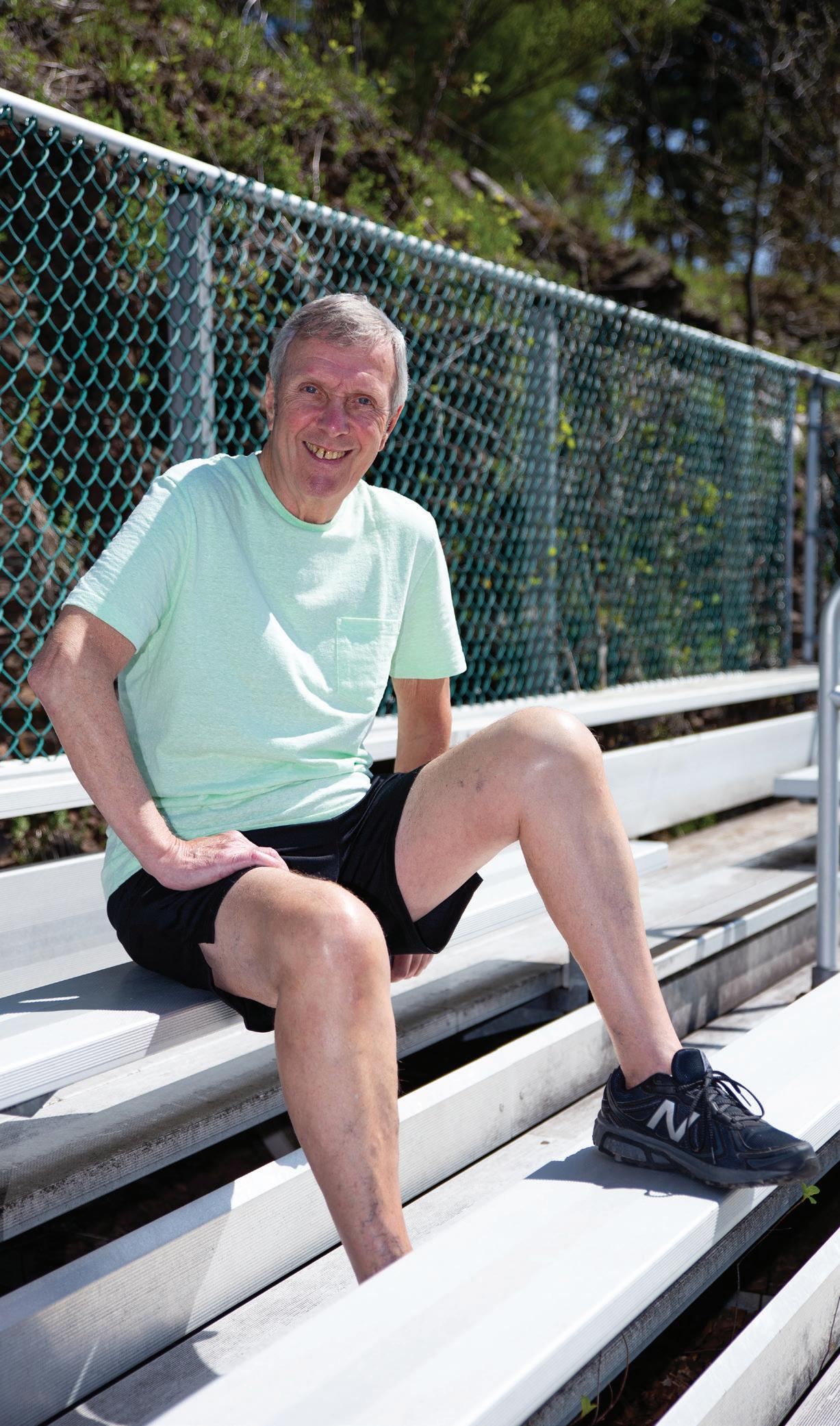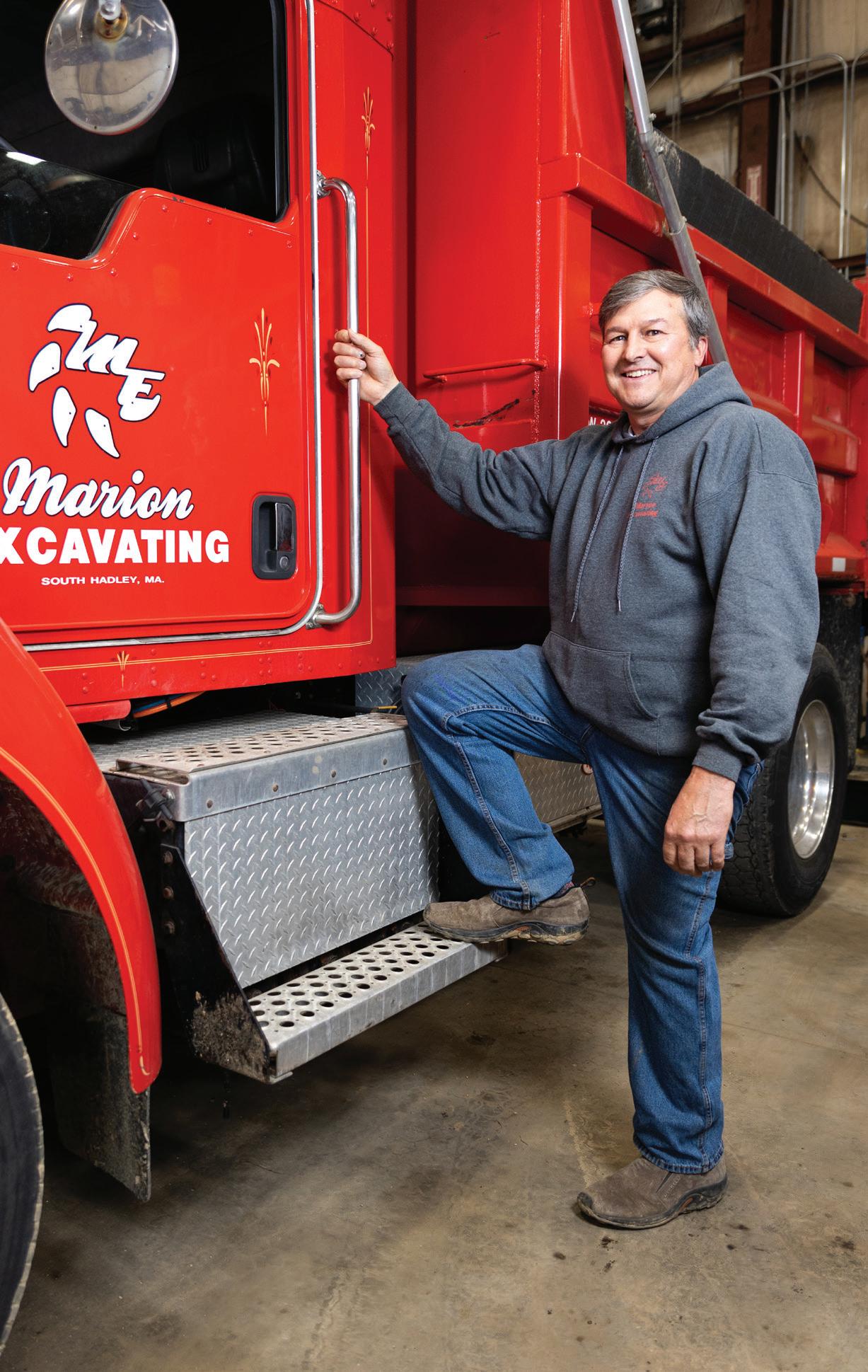
4 minute read
ARTHRITIS: STOP ACHING AND START MOVING Joint replacement
ARTHRITIS:
STOP ACHING AND START MOVING
Two knee replacements have enabled Richard Cerruti to enjoy the activities he loves again.
JOINT REPLACEMENT CAN ALLEVIATE HIP AND KNEE PAIN FOR ADULTS OF ALL AGES, HELPING THEM GET BACK TO DOING THE THINGS THEY LOVE.
FOR YEARS, Richard Cerruti of Holyoke has walked at a brisk pace, completing his favorite three-mile trek down Northampton Street in 50 minutes. When the 72-year-old retired postal worker felt his achy right knee give way during his morning walk, Richard knew he had to take action.
He made an appointment with Noah Epstein, MD, an orthopedic surgeon with the Orthopedic Center at Holyoke Medical Center who had treated Richard’s shoulder pain in the past. “Dr. Epstein ordered X-rays of both knees, which showed I have osteoarthritis,” says Richard.
“Arthritis often causes pain, swelling and stiffness, and limits the range of motion of a person’s joints,” says Dr. Epstein. “The deterioration of cartilage due to arthritis in the joints can cause the bones to touch and grind, leading to pain.”
Dr. Epstein initially took a conservative approach with Richard, prescribing anti-inflammatory medications and physical therapy at CORE Physical Therapy. He also gave Richard a corticosteroid injection. “Richard wanted to be more active,” says Dr. Epstein. “When the injections, therapy and activity modifications weren’t helping him regain his full mobility, I recommended a total knee replacement.”
TWO NEW KNEES
Richard met with Orthopedic Nurse Navigator Caroline White, RN, BSN, who provided information about the procedure, which would replace the damaged knee joint with an artificial prosthesis. “I support patients throughout the process and optimize them for surgery,” says White. This means assessing medical co-morbidities, assisting with insurance
Michael Marion was able to return to work at the excavating company he owns after a hip replacement. HIP REPLACEMENT AT 55
Michael Marion, 55, of Granby had similarly positive results following a total hip replacement in March 2021. The owner of Marion Excavating Company spent his career operating heavy equipment and jumping in and out of trenches. “My occupation did a number on my hip joints,” says Michael, who had shooting pain down his left leg, which affected his sleep and limited range of motion that impacted walking and his ability to put on shoes.
After physical therapy, chiropractic, steroid injections and activity modifications failed to provide a long-term solution, Michael decided upon a total hip replacement at the advice of Khaled Instrum, MD, an orthopedic surgeon with the Orthopedic Center at Holyoke Medical Center.
“Total hip arthroplasties were designed for people aged 65 and older,” says Dr. Instrum. “But if hip pain impacts a person’s ability to participate in daily life and nonoperative management has failed, they become a candidate for a joint replacement.” Dr. Instrum says that improvements in prosthetic components, surgical techniques and the rehabilitation process have made hip surgery a viable option for younger people.
NO MORE PAIN
and appointments, providing a home exercise regimen and ensuring patients have everything they need at home.
“Caroline’s role is important because she’s with patients before, during and after surgery,” says Dr. Epstein. “Seamless communication helps us identify and address problems immediately and leads to better outcomes.” Richard had such a smooth experience with his 2019 knee replacement that he opted to have his second knee replaced 11 months later.
Like the first procedure, Richard returned home using a walker and received home physical therapy. “I went to CORE for outpatient PT,” he says. Richard is now walking two miles a day and looks forward to picking up his speed and his distance in the months ahead.
Noah Epstein, MD Khaled Instrum, MD Michael, whose diagnosis was osteoarthritis, became one of 450,000 Americans who get a “new hip” each year, according to the Agency for Healthcare Research and Quality. Dr. Instrum used an anterolateral surgical approach, which reduced the risk of dislocation. “Michael has done quite well,” says Dr. Instrum. “He had very little pain after surgery and went home the following day.” Moving quickly from a walker to a cane, Michael attended outpatient physical therapy at CORE. One month after surgery, he put his cane away and returned to the office. Though Michael is sitting behind a desk for now, he knows he’ll soon be at the wheel of an excavator or bulldozer. He credits the Orthopedic Center at Holyoke Medical Center with a “phenomenal experience” and says: “Dr. Instrum and Caroline kept me apprised of everything I needed to do every step of the way, making the journey simple. It was nice having a surgeon I could trust so close to home. Why would Caroline White, RN, BSN anyone go anywhere else?!”

✱The HMC Orthopedic Center is located at 10 Hospital Drive, Suite 203, Holyoke.
To make an appointment, please call 413.536.5814.






